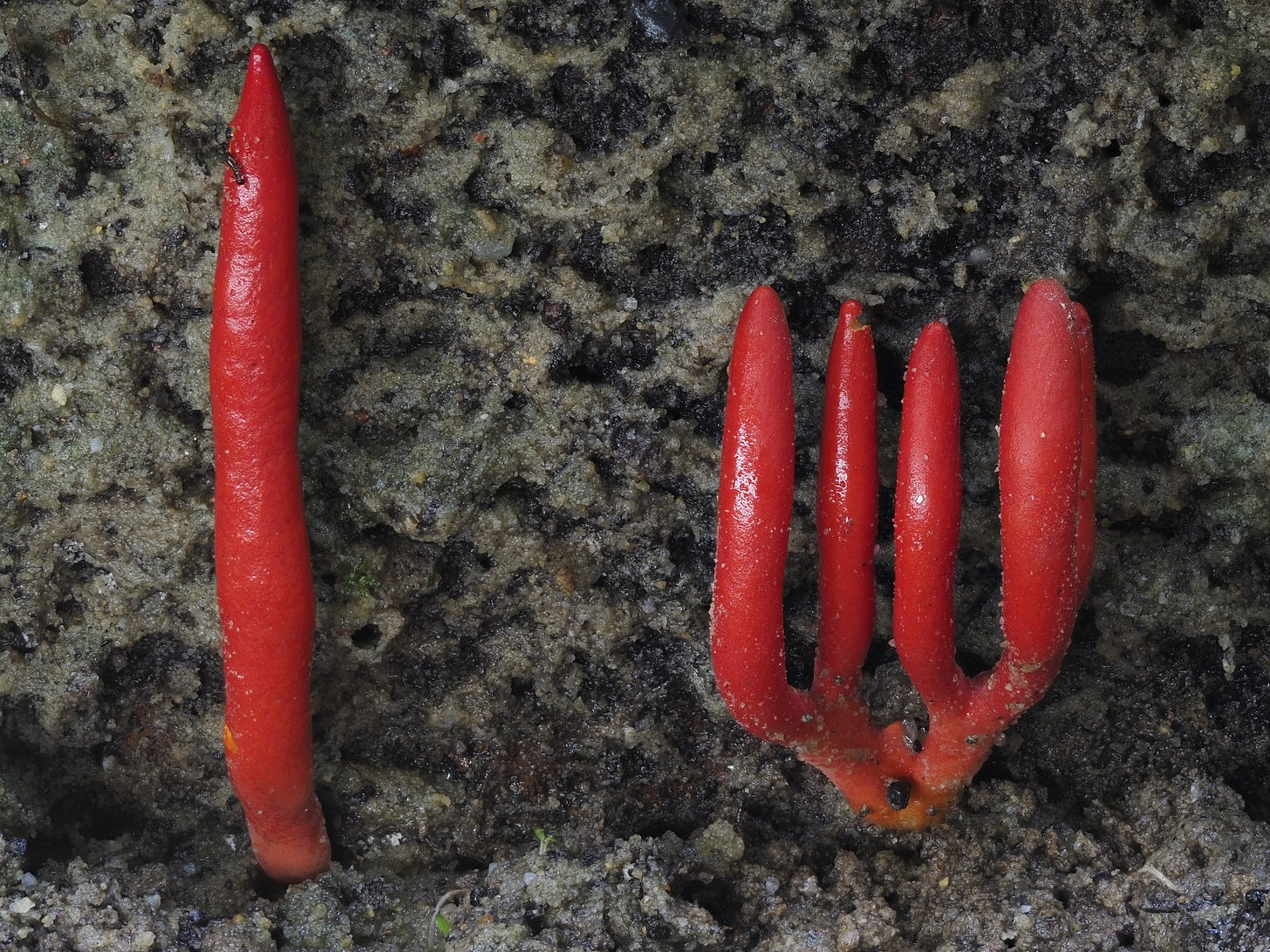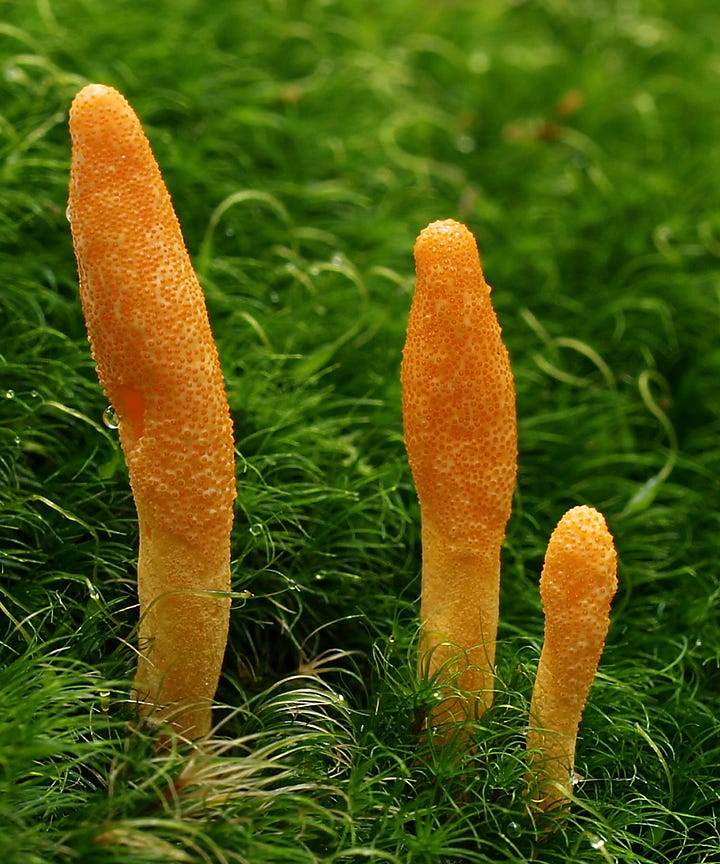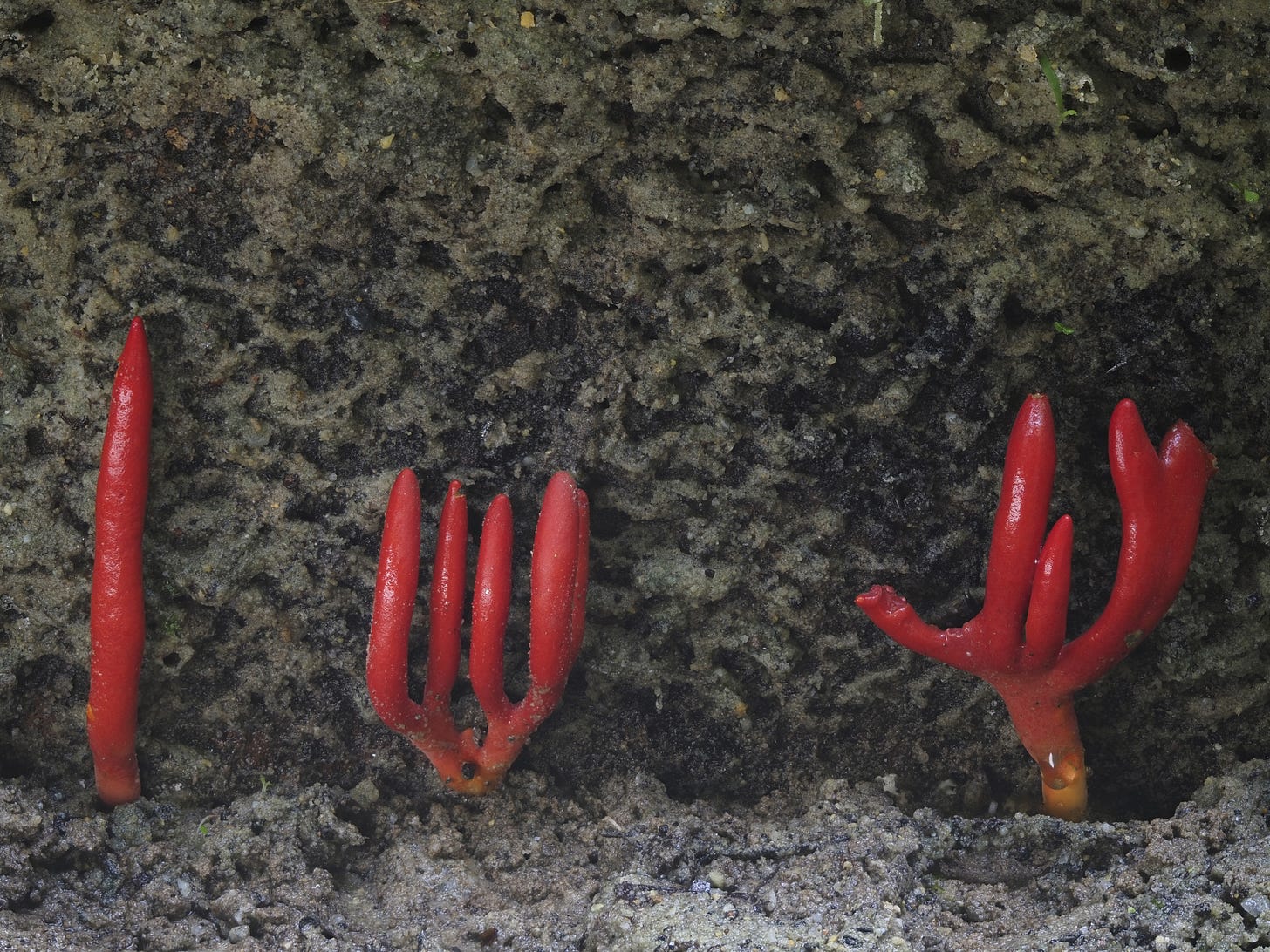On my way to Taman Tugu, I sit in the back of my cab, scroll through my feed, and find an interesting red coral-like fungus.
I find articles published with headlines like, "Deadly fungus, poison fire coral, sighted near Cairns, prompting warning for bushwalkers," "This deadly mushroom can literally shrink your brain—and it's probably more widespread than we thought," and "Sightings of deadly 'fire mushroom' prompt warning from US military in Japan."
The species creating all the hubbub is Trichoderma cornu-damae, also known as 'Poison Fire Coral' and in Japan as 火炎茸 / kaentake, or "fire mushroom."
Personally, I prefer the Taiwanese common names "flame antler" and "flame meat stick fungus."

I get to the forest and take a familiar path down to the stream. I stopped and stared under a log off the side of the track and couldn't believe the red coral I was witnessing. What are the chances I'd spot the very same fungus I was just reading about!?
I stopped for a while to take some photos. A couple comes down the track, confused at my excitement, and when I point, they intuitively understand red means danger.
Of the thousands of mushroom species known, approximately 100 are toxic, with about 30 containing fatal toxins.
Confusion with edible mushrooms
Part of what makes the most toxic mushrooms dangerous are their fungal doppelgängers.
Trichoderma cornu-damae can be really dangerous if you confuse it with an edible mushroom. It's been linked to fatalities in Japan and Korea, where people brewed it into a tea thinking it was something like Ganoderma lucidum (reishi), Cordyceps sobolifera, or C. militaris.


Drinking sake that's been infused with it can be lethal - like in one case in Japan, five people ended up in the hospital, and one of them died within two days. Almost 20 years later, another mushroom liquor case saw the imbiber dead 12 hours after ingestion.
Symptoms of Poison Fire Coral
The trichothecene mycotoxins in this thing are some of the nastiest, most indiscriminate poisons around, targeting pretty much everything, including the immune system, bone marrow, nervous system, kidneys, liver, skin, gastric lining, reproductive system, eyes, lungs, and heart.
It can cause nasty symptoms like stomach pain, vomiting, fever, numbness, skin peeling, brain shrinkage, and problems with perception, movement, and speech. The symptoms they cause are horrific, resembling severe acute radiation poisoning.
To Touch or Not to Touch?
And although it's debatable if touching the fungus causes skin irritation, it is thought to be toxic only if ingested.
While pure trichothecene is poisonous to touch, we don't actually have evidence that Trichoderma cornu-damae is dangerous to handle. Japanese and Taiwanese mushroom hunters handle them without problem, and there aren't any recorded cases of handling and toxicity (that I know of).
A statement reused in all the articles I previously mentioned: "Just touching the Fire Coral fungus can cause dermatitis (reddening or swelling of the skin)."
And then there's this.
The Legend of the Flame Antler
(From a translated post made in a Taiwanese Mushroom group)
Due to its bright appearance and record of death, it is often followed by some exaggerated claims. In recent years, with the attention of mushroom lovers, it has been reported in many mountainous areas of Taiwan.
There are records, but some folks on the Internet describe it as spraying venom, like snakes and beasts that shouldn't dare be touched.
There is not much juice, and there is no obvious liquid when I poke it with a needle. The claim of spraying juice is an obvious bluff.
As for whether there will be an irritating reaction or ulceration if the skin touches the juice remains to be tested, so next time...This era emphasizes science and evidence, and many things on the Internet have to be filtered.
My Verdict
It’s widely stated that it’s the only mushroom that has toxic effects through skin absorption. Though there’s some pushback to this idea.
No matter what side of the debate you're on (safe to touch vs. not safe to touch), as the saying goes, "play stupid games, win stupid prizes."
I'll admire them from afar and just take photos.
Further reading:
How Should We Coexist with the Poisonous Mushroom Podostroma cornu-damae?
Clarity on the Trichoderma toxic mushroom. (A discussion with Dr. Barrett, the Australian mycologist quoted in many of these articles).





